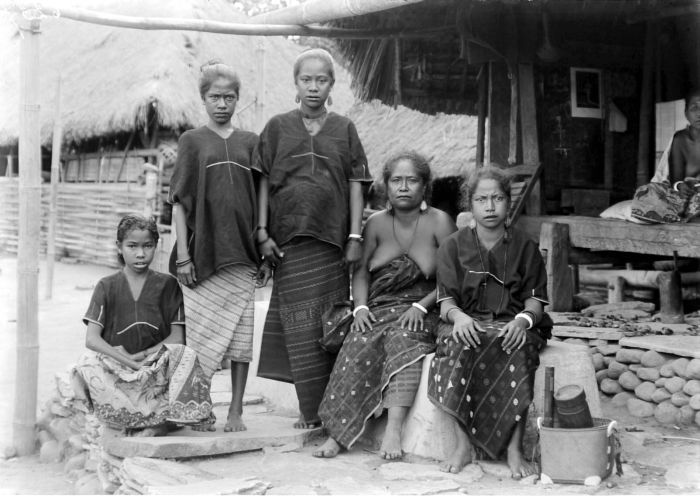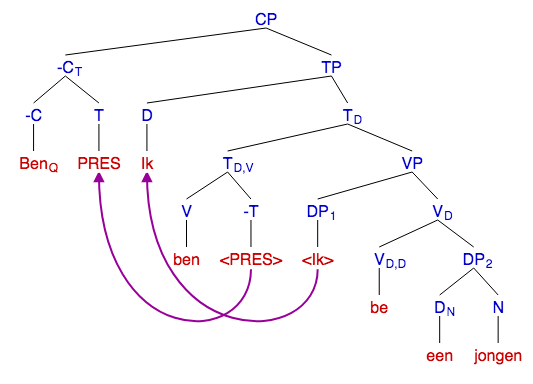|
Echo Answer
In linguistics, an echo answer or echo response is a way of answering a polar question without using words for yes and no. The verb used in the question is simply echoed in the answer, negated if the answer has a negative truth-value. For example: * "Did you go to the cinema?" (or "Didn't you go to the cinema?") * "I did not." or "I didn't go." Finnish The Finnish language is one language that employs echo answers in response to yes–no questions. It does not answer them with either adverbs or interjections. So the answer to "Tuletteko kaupungista?" ("Are you coming from town?") is the verb form itself, "Tulemme" ("We are coming."). Negatively phrased questions are answered similarly. Negative answers use the negative verb ''en'' in coordination with the infinitive. The negative answer to "Tunnetteko herra Lehdon?" ("Do you know Mr Lehto?") is "En tunne" ("I don't know.") or simply "En" ("I don't."). Celtic languages The Celtic languages also primarily employ echo answers. ... [...More Info...] [...Related Items...] OR: [Wikipedia] [Google] [Baidu] |
Linguistics
Linguistics is the scientific study of language. The areas of linguistic analysis are syntax (rules governing the structure of sentences), semantics (meaning), Morphology (linguistics), morphology (structure of words), phonetics (speech sounds and equivalent gestures in sign languages), phonology (the abstract sound system of a particular language, and analogous systems of sign languages), and pragmatics (how the context of use contributes to meaning). Subdisciplines such as biolinguistics (the study of the biological variables and evolution of language) and psycholinguistics (the study of psychological factors in human language) bridge many of these divisions. Linguistics encompasses Outline of linguistics, many branches and subfields that span both theoretical and practical applications. Theoretical linguistics is concerned with understanding the universal grammar, universal and Philosophy of language#Nature of language, fundamental nature of language and developing a general ... [...More Info...] [...Related Items...] OR: [Wikipedia] [Google] [Baidu] |
Nage
The Nage are an indigenous people living on the eastern Indonesian islands of Flores (chiefly in the eponymous Nagekeo Regency), and Timor. They are descended from the indigenous population of Flores They are largely assimilated by the neighboring people. They speak Nage, one of the major languages in the Austronesian languages group. Agriculture The Nage people mainly engaged in manual slash-and-burn farming (tubers, rice, corn), hunting and gathering. Until the middle of the 20th century, communal land ownership with large families participation were still preserved. They live in cumulus-type settlements, located on the slopes of mountains and surrounded by stone walls. Houses are piled up in rectangular position and connected by an open gallery into a single complex, which is intended for joint residence of several large families. Lifestyle The clothes of the Nage people are loincloth and skirt or ''kain''. Women fasten it over the breast, and men around the waist. The diet ... [...More Info...] [...Related Items...] OR: [Wikipedia] [Google] [Baidu] |
Yes And No
''Yes'' and ''no'', or similar word pairs, are expressions of the affirmative and the negative, respectively, in several languages, including English. Some languages make a distinction between answers to affirmative versus negative questions and may have three-form or four-form systems. English originally used a four-form system up to and including Early Middle English. Modern English uses a two-form system consisting of ''yes'' and ''no''. It exists in many facets of communication, such as: eye blink communication, head movements, Morse code, and sign language. Some languages, such as Latin, do not have yes-no word systems. Answering a "yes or no" question with single words meaning ''yes'' or ''no'' is by no means universal. About half the world's languages typically employ an echo response: repeating the verb in the question in an affirmative or a negative form. Some of these also have optional words for ''yes'' and ''no'', like Hungarian, Russian, and Portuguese. Ot ... [...More Info...] [...Related Items...] OR: [Wikipedia] [Google] [Baidu] |
Yes–no Question
In linguistics, a yes–no question, also known as a binary question, a polar question, or a general question, is a closed-ended question whose expected answer is one of two choices, one that provides an affirmative answer to the question versus one that provides a negative answer to the question. Typically, the choices are either "yes" or "no" in English. Yes–no questions present an exclusive disjunction, namely a pair of alternatives of which only one is a felicitous answer. In English, such questions can be formed in both positive and negative forms: * positive yes/no question: "Will you be here tomorrow?" * negative yes/no question: "Won't you be here tomorrow?" Yes–no questions are in contrast with non-polar wh-questions. The latter are also called content questions, and are formed with the five Ws plus an H ("who", "what", "where", "when", "why", "how"). Rather than restricting the range of possible answers to two alternatives, content questions are compatible with ... [...More Info...] [...Related Items...] OR: [Wikipedia] [Google] [Baidu] |
A-not-A
In linguistics, an A-not-A question or A-neg-A question, is a type of polar question used primarily in Sinitic languages that asks about something by presenting both its positive and negative possibilities. Instead of allowing a simple "yes" or "no" answer, these questions require the respondent to repeat either the positive or negative part of the original question. For example, in Mandarin, instead of asking "Do you want to go?" and expecting a "yes" or "no", the question might be structured as "Want-not-want to go?" A-not-A questions are characterized by their inherent linguistic neutrality, with the interrogator deliberately avoiding any presumption about the truth of the statement being questioned.Law, Ann (2001) A-not-A questions in Cantonese. UCLWPL 13, 295-318. This neutrality is achieved through a value-neutral presentation that simultaneously offers both positive and negative forms of a proposition. While the term "A-not-A question" originated in Mandarin, it has since be ... [...More Info...] [...Related Items...] OR: [Wikipedia] [Google] [Baidu] |
Mandarin Chinese
Mandarin ( ; zh, s=, t=, p=Guānhuà, l=Mandarin (bureaucrat), officials' speech) is the largest branch of the Sinitic languages. Mandarin varieties are spoken by 70 percent of all Chinese speakers over a large geographical area that stretches from Yunnan in the southwest to Xinjiang in the northwest and Heilongjiang in the northeast. Its spread is generally attributed to the greater ease of travel and communication in the North China Plain compared to the more mountainous south, combined with the relatively recent spread of Mandarin to frontier areas. Many varieties of Mandarin, such as Southwestern Mandarin, those of the Southwest (including Sichuanese dialects, Sichuanese) and the Lower Yangtze Mandarin, Lower Yangtze, are not mutually intelligible with the Beijing dialect (or are only partially intelligible). Nevertheless, Mandarin as a group is often placed first in lists of languages by number of native speakers (with nearly one billion). Because Mandarin originated in ... [...More Info...] [...Related Items...] OR: [Wikipedia] [Google] [Baidu] |
Chinese Language
Chinese ( or ) is a group of languages spoken natively by the ethnic Han Chinese majority and List of ethnic groups in China, many minority ethnic groups in China, as well as by various communities of the Chinese diaspora. Approximately 1.39 billion people, or 17% of the global population, speak a variety of Chinese as their first language. Chinese languages form the Sinitic languages, Sinitic branch of the Sino-Tibetan language family. The spoken varieties of Chinese are usually considered by native speakers to be dialects of a single language. However, their lack of mutual intelligibility means they are sometimes considered to be separate languages in a Language family, family. Investigation of the historical relationships among the varieties of Chinese is ongoing. Currently, most classifications posit 7 to 13 main regional groups based on phonetic developments from Middle Chinese, of which the most spoken by far is Mandarin Chinese, Mandarin with 66%, or around 800&nb ... [...More Info...] [...Related Items...] OR: [Wikipedia] [Google] [Baidu] |
Nepali Language
Nepali (; , ), or ''Gorkhali'' is an Indo-Aryan languages, Indo-Aryan language native to the Himalayas region of South Asia. It is the official and most widely spoken Languages of Nepal, language of Nepal, where it also serves as a ''lingua franca''. Nepali has Languages with official status in India, official status in the Indian state of Sikkim and in the Gorkhaland Territorial Administration of West Bengal. It is spoken by about a quarter of Bhutan's population. Nepali also has a significant number of speakers in the Indian states of Arunachal Pradesh, Assam, Himachal Pradesh, Manipur, Meghalaya, Mizoram and Uttarakhand. In Myanmar it is spoken by the Burmese Gurkhas. The Nepali diaspora in the Middle East, Brunei, Australia and worldwide also use the language. Nepali is spoken by approximately 19 million native speakers and another 14 million as a second language. Nepali is commonly classified within the Eastern Pahari group of the Northern Indo-Aryan languages, Northern zo ... [...More Info...] [...Related Items...] OR: [Wikipedia] [Google] [Baidu] |
Portuguese Language
Portuguese ( or ) is a Western Romance language of the Indo-European language family originating from the Iberian Peninsula of Europe. It is the official language of Angola, Brazil, Cape Verde, Guinea-Bissau, Mozambique, Portugal and São Tomé and Príncipe, and has co-official language status in East Timor, Equatorial Guinea and Macau. Portuguese-speaking people or nations are known as Lusophone (). As the result of expansion during colonial times, a cultural presence of Portuguese speakers is also found around the world. Portuguese is part of the Iberian Romance languages, Ibero-Romance group that evolved from several dialects of Vulgar Latin in the medieval Kingdom of Galicia and the County of Portugal, and has kept some Gallaecian language, Celtic phonology. With approximately 250 million native speakers and 17 million second language speakers, Portuguese has approximately 267 million total speakers. It is usually listed as the List of languages by number of native speaker ... [...More Info...] [...Related Items...] OR: [Wikipedia] [Google] [Baidu] |
Latin
Latin ( or ) is a classical language belonging to the Italic languages, Italic branch of the Indo-European languages. Latin was originally spoken by the Latins (Italic tribe), Latins in Latium (now known as Lazio), the lower Tiber area around Rome, Italy. Through the expansion of the Roman Republic, it became the dominant language in the Italian Peninsula and subsequently throughout the Roman Empire. It has greatly influenced many languages, Latin influence in English, including English, having contributed List of Latin words with English derivatives, many words to the English lexicon, particularly after the Christianity in Anglo-Saxon England, Christianization of the Anglo-Saxons and the Norman Conquest. Latin Root (linguistics), roots appear frequently in the technical vocabulary used by fields such as theology, List of Latin and Greek words commonly used in systematic names, the sciences, List of medical roots, suffixes and prefixes, medicine, and List of Latin legal terms ... [...More Info...] [...Related Items...] OR: [Wikipedia] [Google] [Baidu] |
Cardiff University
Cardiff University () is a public research university in Cardiff, Wales. It was established in 1883 as the University College of South Wales and Monmouthshire and became a founding college of the University of Wales in 1893. It was renamed University College, Cardiff in 1972 and merged with the University of Wales Institute of Science and Technology in 1988 to become University of Wales College, Cardiff and then University of Wales, Cardiff in 1996. In 1997 it received Academic degree, degree-awarding powers, but held them in abeyance. It adopted the trade name, operating name of Cardiff University in 1999; this became its legal name in 2005, when it became an independent university awarding its own degrees. Cardiff University is the only List of universities in Wales, Welsh member of the Russell Group of research-intensive British universities. Academics and alumni of the university have included four heads of state or government and two Nobel laureates. the university's academ ... [...More Info...] [...Related Items...] OR: [Wikipedia] [Google] [Baidu] |
Hiberno-English
Hiberno-English or Irish English (IrE), also formerly sometimes called Anglo-Irish, is the set of dialects of English native to the island of Ireland. In both the Republic of Ireland and Northern Ireland, English is the first language in everyday use and, alongside the Irish language, one of two official languages (with Ulster Scots, in Northern Ireland, being yet another local language). The writing standards of Irish English, such as its spelling, align with British English. But the diverse accents and some of the grammatical structures and vocabulary of Irish English are unique, including certain notably conservative phonological features and vocabulary: those that are no longer common in the dialects of England or North America. It shows significant influences from the Irish language and, in the north, the Scots language. Phonologists today often divide Irish English into four or five overarching dialects or accents: Ulster or Northern Irish accents, Western and ... [...More Info...] [...Related Items...] OR: [Wikipedia] [Google] [Baidu] |







